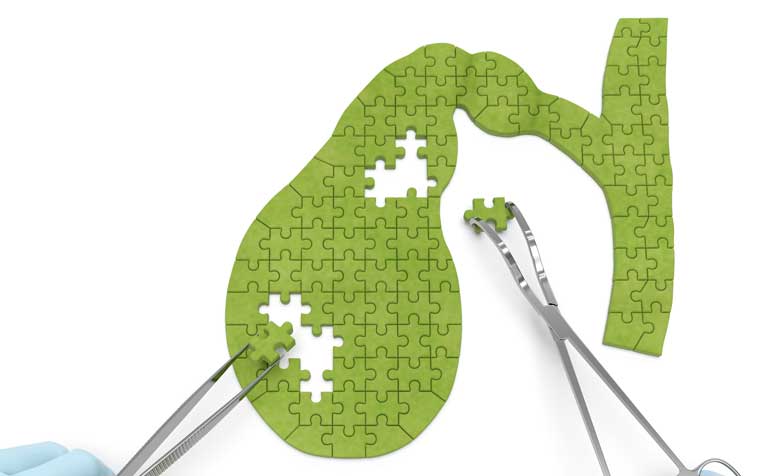
Gallbladder disease treatment is dependent on its stage - whether it is asymptomatic, symptomatic or complicated.
Treating gallbladder disease
The treatment of gallbladder disease will depend on its stage – whether it is asymptomatic, symptomatic or complicated.
Treating gallbladder disease at the asymptomatic stage:
Generally, patients at this stage who have no symptoms do not need surgery, as the chances of developing pain and other complications are low. But for patients in special situations, such as those with haemolytic anaemia or those who are at risk of developing gallbladder cancer, treatment may be necessary, adds Dr Teo Jin Yao, Associate Consultant, Department of Hepato-pancreato-biliary and Transplant Surgery, Singapore General Hospital (SGH), a member of the SingHealth group.
Treating gallbladder disease at the symptomatic stage:
For these patients, surgery to remove the gallbladder, called cholecystectomy, is usually advised. “This is best performed via laparoscopy, which is also known as keyhole surgery,” points out Dr Teo. “There is less pain involved and a faster recovery, and it leaves only small scars. As a rule, patients with symptomatic gallbladder disease will undergo surgery in an elective setting at their convenience, and this can often be done as a day-care procedure or with an overnight stay. This is the most reliable method to deal with both the diseased gallbladder and gallstones.”
Fortunately, the gallbladder is an organ that people can live without. “Your liver produces the bile to digest a normal diet, not the gallbladder. If the gallbladder is removed, bile will flow out of the liver into the common bile duct, and into the small intestine directly – instead of being stored in the gallbladder.”
Treating gallbladder disease at the complicated stage:
At this stage, patients will usually be treated as emergency cases.
Bile duct obstruction and cholangitis
Patients are put on intravenous antibiotics first. Dr Teo says: “Then, the obstruction is relieved by endoscopy (ERCP). The gallbladder is surgically removed when the patient is stabilised.”
Acute cholecystitis
Early laparoscopic cholecystectomy is often recommended in this case, offering quick relief of symptoms and quick return to work. It is the favoured approach when laparoscopic expertise is available. Dr Teo adds: “Alternatively, it can be performed after a course of antibiotics when the inflammation is more settled, which is the traditional approach.” Open surgery is sometimes performed for more technically difficult cases.
Acute gallstone pancreatitis
Early laparoscopic cholecystectomy can be performed once the symptoms are mostly resolved. “This is to avoid a second attack of pancreatitis,” says Dr Teo.
In certain circumstances, non-surgical treatment may be necessary. Dr Teo explains: “If the patient has cholesterol stones, and is unfit for surgery, dissolution therapy has been discussed.”
Known as oral bile acid therapy, this dissolution therapy dissolves the cholesterol stones. “But it takes months and years before there is a discernible effect,” says Dr Teo. “This treatment is also prone to the recurrence of stones. So, it is usually not advised.”
The good news about gallbladder disease is that it’s very treatable. “Recovery after surgery is usually rapid – patients can be discharged on the same day or after an overnight stay with only small incisions that may not even require stitching.” says Dr Teo. “Within a week, patients can return to their normal routines.”
Ref: P16
Contributed by


















 Get it on Google Play
Get it on Google Play